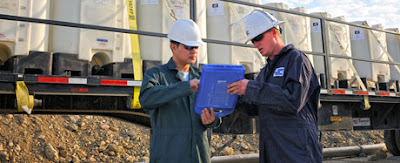This article talks about the increasing role of the US in natural gas exportation.
Shale gas is the energy topic of the day. Production is increasing, but so is gas demand – for electric generation, transportation, and as an industrial feedstock. However, perhaps the most significant dynamic with the potential to drive natural gas prices up in the foreseeable future is a growing push to export LNG from the US. That particular dynamic has recently gone into hyper-drive, with numerous liquified natural gas (LNG) export requests having been filed with the US Department of
Energy in the past few years.
Consider this: according to the Energy Information Administration, total natural gas consumption for 2011 was 24.3 trillion cubic feet (Tcf), and
2012 consumption looks to be on the order of 26 Tcf. In the meantime, just since mid-August, US companies have
filed for permits with the USDOE to export 7.8 Tcf of LNG – about 30% of current total domestic consumption.
Totalrequests year-to- date equal 11.2 Tcf (though almost 1 Tcf is for re-export of Canadian gas). Add to that, the
5.3 Tcf of exports requested last year, and you get approximately 16.5 Tcf. That’s over 60% of current domestic consumption. It’s also more than the amount of US LNG export capacity from five brownfield and three Greenfield projects in play that are listed in a
recent Wood MacKenzie report.
Of course, not all of these planned facilities will get permitted or built. But some will, and perhaps a good number, because the economics are compelling and the market is there.
At the September LNG Producer-Consumer Conference in Tokyo, the Indian delegate was quoted as saying that
India’s LNG import capability will multiply five-fold in as many years. It’s not likely to stop there, in a country of over a billion inhabitants, with their enormous energy problems. For its part, post-Fukushima
Japan has shut down all but 2 of its 54 reactors, and
Tokyo Electric Poweris reportedly in
talks with North American suppliers(and negotiating with
Washington) to secure long-range gas contracts to supply gas-fired generators. There is a big hole to fill and gas will help fill it.
Clearly, much of the LNG imported by these and other Asian countries will be sourced from places other than North America. Today, 18 countries export the gas to 25 importing nations (with Qatar supplying almost a third of all global LNG in 2011). The US is the new kid on the block,
supplying only .1% of the world’s exports last year. However, a powerful combination of robust pipelines, multiple vendors, and world class shale reserves is likely to turn the US – and especially the Gulf Coast – into a favored supplier. If permits can be secured, export growth could occur relatively quickly.
The process of condensing natural gas into a liquid at -160 degrees Celsius reduces its volume by a factor 600, and makes it economic to ship. But the industry is enormously capital-intensive and costs are considerable: A “typical” investment includes an outlay of one to two billion dollars for liquefaction facilities, over two hundred million per vessel for LNG tankers, and half a billion to a billion dollars for receiving terminals. Yet even with those costs, the economic incentive is there. Currently, the North America pays just over $3 per mmBtu, while the Japanese spot market price hovers around $13. In part that’s because Asian gas prices are linked to oil. According to Reuters, long-term contract shipments to Japan would likely be priced at less than
$10 per mmBtu. That’s a powerful market differential. Investments in supplying LNG to hungry Asian markets may yield payback periods of under five years for the first players into the game, Woods MacKenzie notes.
The laws of economics dictate that, in the long run, supply and demand reach an equilibrium. LNG facilitates that equilibrium dynamic by linking land-locked North American supplies to world markets. The arbitrage opportunity may eventually diminish if Asian gas and oil prices are de-linked (gas is currently indexed to oil, but there is a strong movement to change that). In the meantime, however, that price differential constitutes a powerful incentive.
The Obama Administration has been looking at this LNG export issue, with a study and recommendations (thrice delayed) due to be released in December. To some degree, this push for numerous twenty-year (or longer) export permits seems to have caught just about everybody off guard. In fact, the
Energy Information Administration study from January of this year evaluating this issue posits a high case scenario of 12 Bcf/day. In the meantime, exporters have lined up quickly, and export requests for 1.25 times that amount have been submitted in the past two years.
Although it can take several years and billions of dollars to build the LNG facilities, the LNG price differential and export dynamic truly make gas markets more “liquid.” This is bound to have a long-term upward impact on US natural gas prices. The challenge for the Obama Administration will be how to balance international free markets with the long-sought goal of US energy security. It won’t be easy.
Source: http://www.forbes.com/sites/peterdetwiler/2012/11/08/us-natural-gas-exports-poised-for-take-off










































